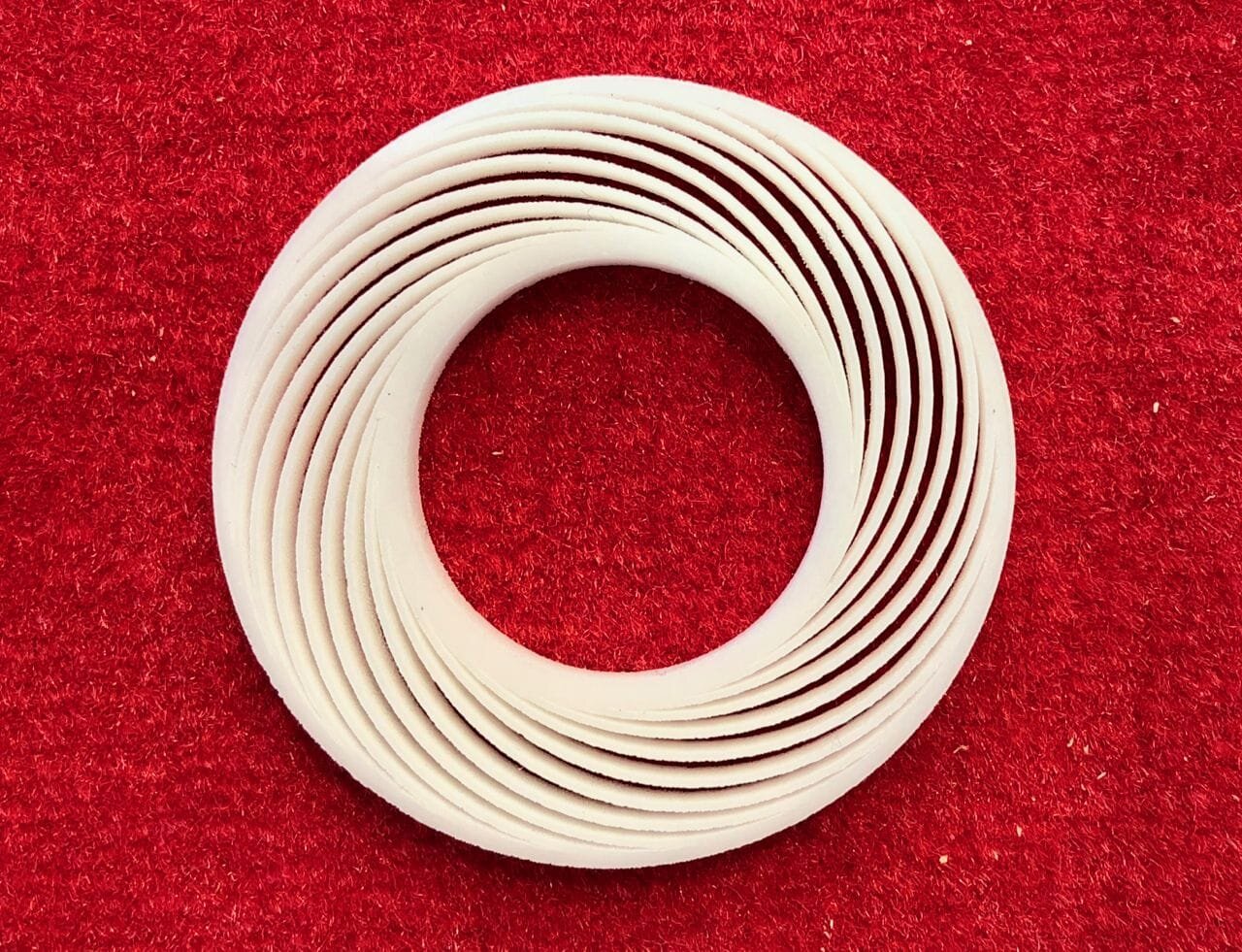![A finely detailed ceramic 3D print (not made with the process described herein) [Source: Fabbaloo]](https://fabbaloo.com/wp-content/uploads/2020/05/image-asset_img_5eb08da42209e.jpg) A finely detailed ceramic 3D print (not made with the process described herein) [Source: Fabbaloo]
A finely detailed ceramic 3D print (not made with the process described herein) [Source: Fabbaloo]
Researchers in California have developed a new method for welding ceramics.
Ceramics are a highly useful material in industry due to their unusual characteristics. Ceramics are extremely hard, highly resistant to chemicals and notably temperature resistant. These properties lead to many applications of the various types of ceramic materials.
Ceramic Characteristics
However, ceramic objects are not as easily produced as thermoplastics or metals, and there are few methods of 3D printing ceramics. One popular method is to 3D print ceramic material with a binder, and then bake out the binder and sinter the ceramics together. This is done after printing in a high-temperature furnace.
But that is a two – and sometimes three – step process. I’ve been wondering if it might be possible to develop a single-step ceramic 3D printer, and it seems that the new research could lead exactly to that.
Ceramic Welding Challenges
Welding of ceramics sounds like a preposterous idea at first, due to the extreme heat resistance of ceramics. You’d need incredibly high heat to melt a portion of a ceramic object. But if you applied such heat to an object, the thermal gradient (the difference in temperature between areas) would be so high that the object might crack.
The researchers seem to have developed a way to do this without causing large thermal gradients. They do so with a rapidly pulsing laser beam, which they call “UF”, for Ultra Fast Pulsed Laser.
Pulsed Laser Ceramic Welding
It seems that the pulsed laser is able to deposit a very significant amount of energy on a very small spot for only a brief moment. But that moment is sufficient to locally melt the ceramic.
The researchers seem to have spent considerable time tuning this process to ensure it works correctly. They’ve been able to make their “joining” approach work on two popular ceramic materials, polycrystalline alumina and yttria-stabilized zirconia.
Operations they’ve successfully completed include the ability to weld tubes together.
There’s more notable characteristics to the new ceramic welding process. First, it consumes only 50W of power, which is quite low when you consider the hundreds of watts required to melt metal in laser systems.
Secondly, because the thermal gradient is so low, it is possible to weld ceramics in ambient atmosphere and not require heating of the entire structure.
Ceramic Welding Opportunities
Their work will surely open up many possibilities in industry, as there really isn’t a practical method of welding available today for such materials.
But there is yet another possibility that I am thinking about: a new type of ceramic 3D printer that uses this approach.
Powder-bed / laser systems are well-known in the 3D printing industry, as that process provides for 3D printing detailed objects in both thermoplastic and fine metal powders. What if this approach could be adapted for use with ceramic powders?
New Ceramic 3D Printer?
Such a device would be relatively easy to make, as most of the machine would be near-identical to today’s powder-bed / laser devices. It would be even simpler than a metal 3D printer, as it would not require atmospheric control or significant heating.
Really, the major change would simply be in the laser toolhead. Even the software would be mostly the same, with only changes to the motions and power levels to match the materials and process.
Will someone attempt to use this technology in a ceramic 3D printer? I think that is highly likely to occur.
Via Science

